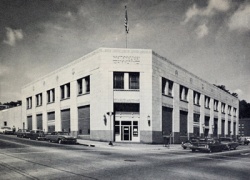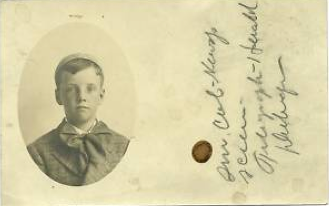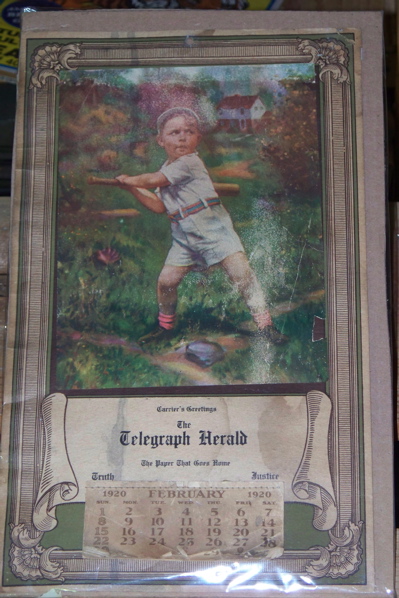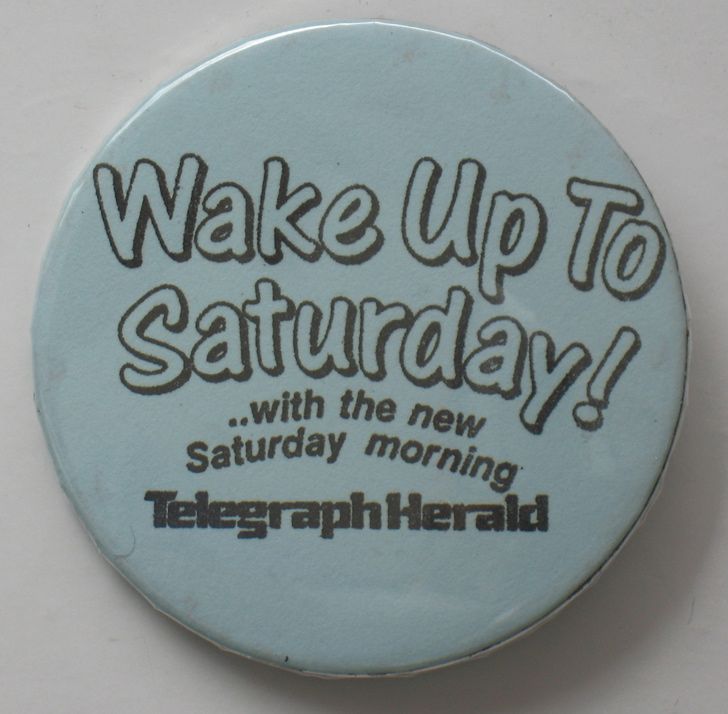Encyclopedia Dubuque
"Encyclopedia Dubuque is the online authority for all things Dubuque, written by the people who know the city best.”
Marshall Cohen—researcher and producer, CNN
Affiliated with the Local History Network of the State Historical Society of Iowa, and the Iowa Museum Association.
TELEGRAPH HERALD: Difference between revisions
No edit summary |
No edit summary |
||
| Line 8: | Line 8: | ||
The two newspapers merged on October 26, 1854. The new paper, known as The Daily Express and Herald, had nine columns and remained four pages. The word "Express" was dropped from the title on July 29, 1859 and the paper became ''The Dubuque Herald''. (4) | The two newspapers merged on October 26, 1854. The new paper, known as The Daily Express and Herald, had nine columns and remained four pages. The word "Express" was dropped from the title on July 29, 1859 and the paper became ''The Dubuque Herald''. (4) | ||
''The Dubuque Daily Telegraph'' was founded by [[MAHONY, Dennis | ''The Dubuque Daily Telegraph'' was founded by [[MAHONY, Dennis|Dennis [[MAHONY]] on July 5, 1870. The paper was later purchased by [[QUIGLEY, P. J.|P. J. QUIGLEY]]. On October 27, 1891 the ''Dubuque Daily Telegraph'' was consolidated with ''The Dubuque Herald'' to become ''The Telegraph-Herald''. (5) | ||
The ''Telegraph'' had reached its 31st year of existence on July 6th, 1901. It had absorbed eight other newspapers during this time. (6) | The ''Telegraph'' had reached its 31st year of existence on July 6th, 1901. It had absorbed eight other newspapers during this time. (6) | ||
Revision as of 04:29, 5 December 2014
This entry is being edited.
TELEGRAPH HERALD. In 1919 the National Historical Society meeting in Cincinnati, Ohio officially declared that the DUBUQUE VISITOR was the first newspaper west of the MISSISSIPPI RIVER. (1) The Telegraph Herald is the direct descendant of that paper. The "Visitor" was a weekly and the first copy consisted of four pages. On June 3, 1837 a new owner changed the name of the paper to the IOWA NEWS. On August 1, 1841 the paper was renamed MINER'S EXPRESS (THE). The paper was still four pages long in its original size of 16x21 inches. (2)
The Dubuque Tri-Weekly Herald was first available to the public on April 19, 1851. The four page paper was 14X21. Faced with competition, The Miner's Express announced a daily newspaper on August 19, 1851. This challenge was answered by the Dubuque Tri-Weekly Herald with its own daily. The two newspapers survived with an editor who also often served as a reporter and printer. Type was hand-set and the printing done on a hand-press. (3)
The two newspapers merged on October 26, 1854. The new paper, known as The Daily Express and Herald, had nine columns and remained four pages. The word "Express" was dropped from the title on July 29, 1859 and the paper became The Dubuque Herald. (4)
The Dubuque Daily Telegraph was founded by [[MAHONY, Dennis|Dennis MAHONY on July 5, 1870. The paper was later purchased by P. J. QUIGLEY. On October 27, 1891 the Dubuque Daily Telegraph was consolidated with The Dubuque Herald to become The Telegraph-Herald. (5)
The Telegraph had reached its 31st year of existence on July 6th, 1901. It had absorbed eight other newspapers during this time. (6)
Daily and Weekly Dispatch-----1884
Daily and Weekly Democrat-----1885
Daily and Weekly Independent--1887
Industrial Leader-------------1888
Industrial West---------------1889
In 1919 the TIMES-JOURNAL was the last competitor.
Quick to adopt modern ideas and machinery, the paper was called one of Iowa's finest. With circulation growing, the paper moved from rented space at 7th and Main into spacious quarters at 5th and Main. Quigley maintained an active role in the management of the paper until his death on February 23, 1917. His successor was Fred W. WOODWARD.
Woodward became president and general manager of the Telegraph-Herald in 1917. In 1927, he negotiated the merger of the paper with the Times Journal. The first issue of the paper printed in its present location at 8th and Bluff appeared on newsstands on July 14, 1930.
In 1965 the Woodward family purchased total control of the paper from the Quigley family. In 1966 newspaper publishing history was made when on February 29th the Telegraph Herald became the first to use the Goss Metro Offset double-wide press ever built.
Today the Telegraph Herald is a division of WOODWARD COMMUNICATIONS, INC.
As far back as 1924, the newspaper stated "the management has never hesitated to inaugurate the latest appliances in all departments of the plant." Among the innovations listed at that time were:
the first patent mailer
the first paper folder
the first and only double cylinder press
the first car load of print paper
the first flat stereotyping outfit
the first curved stereotyping outfit
the first pneumatic tube system in Iowa
the first web perfecting press, capacity 8,000 per hour
the first two car loads of roll paper in one consignment
the first electric clock, motor and lighting
the first carrier boys' uniforms
the first color disc
the first Cottrell book press
the first and only car of book paper received in Dubuque
the largest car of roll print
In the same article, the newspaper recounted its publishing firsts: (7)
the first published list of farmers in Iowa
the first and only original and special premiums
to subscribers--a county directory
the first double-decked press to print 18,000
16-page papers per hour, folder in one part
the first three-deck, four-color perfecting press,
printing 24,000 24-page papers an hour and
the modern stereotyping plant going with it
the first to issue a state directory--the largest
book ever published west of the [[MISSISSIPPI
RIVER]] and the only directory ever published
containing a resume of the state, counties,
cities and towns and names of businesses and
professional men and farmers.
---
Source:
1. "Telegraph-Herald First Paper West of Mississippi, Decision of National Historical Society, November 30, 1919, p. 1
2. Ibid.
3. Ibid.
4. Ibid.
5. Ibid.
6. Ibid.
3. "The Telegraph Herald," Telegraph-Herald, October 27, 1901





